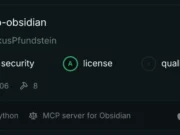Zapper is a powerful Linux tool designed to enhance privacy by concealing command-line options and processes from system monitoring tools like ps.
It is particularly useful for developers, ethical hackers, or anyone who values discretion while running commands on a Linux system. This article explores Zapper’s functionality, installation, and how it works.
Key Features Of Zapper
- Hides Command-Line Options: Zapper can obscure command-line arguments, ensuring sensitive information isn’t exposed in process monitoring tools.
- Process Concealment: It allows users to hide processes or run them under different process IDs (PIDs).
- No Root Access Required: Zapper works without requiring root privileges.
- Compatibility with Static Binaries: It supports static binaries, including GoLang binaries.
- Environment Protection: It zaps sensitive data from
/proc/<PID>/environ. - Lightweight and Efficient: With only 0.01% overhead, Zapper ensures minimal performance impact.
- Advanced Techniques: It uses
ptrace()to manipulate the ELF Auxiliary Table without relying onLD_PRELOADor libc.
To download and install Zapper, execute the following commands:
curl -fL -o zapper https://github.com/hackerschoice/zapper/releases/latest/download/zapper-linux-$(uname -m) && \
chmod 755 zapper && \
./zapper -hAlternatively, you can compile it from source:
git clone https://github.com/hackerschoice/zapper.git
cd zapper
make- Hide Command Options:
./zapper nmap -sCV -F -Pn scanme.nmap.orgThe above command will run nmap while hiding the options (-sCV -F -Pn scanme.nmap.org) from being displayed.
- Replace Shell with Hidden Process:
exec ./zapper -f -a'[kworker/1:2-cgroup_destroy]' tmuxThis replaces the current shell with a hidden tmux session and masks it as a kernel process.
How Zapper Works
Zapper leverages ptrace() to manipulate the ELF Auxiliary Table during the execution of SYS_execve().
It moves command-line options to a new memory location and destroys the old one, effectively erasing them from the kernel’s perspective. The tool also tracks subsequent fork() or execve() calls to maintain privacy.
Additionally, Zapper can assign processes to specific PIDs using an innovative technique that iterates over all possible PIDs until the desired one is reached.
Zapper is an impressive tool for those who need to safeguard their command-line activities on Linux systems.
Its ability to hide processes and command-line options without root access makes it a versatile solution for enhancing privacy. However, users should exercise caution and ensure compliance with ethical guidelines when using such tools.











%20Works.png)




.webp)
